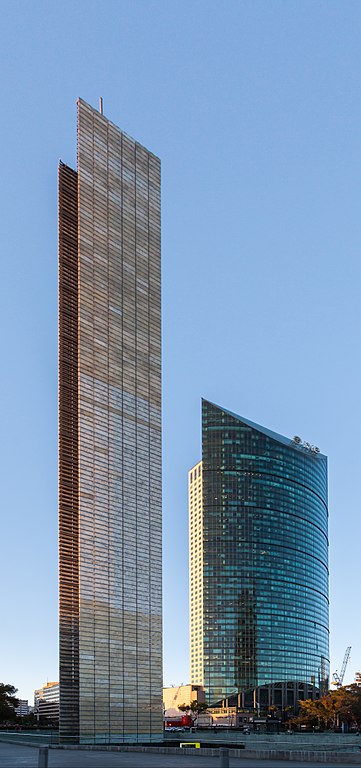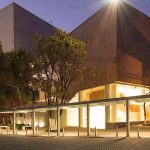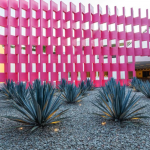
The Estela de luz monument, in English, “Stele of light” is, perhaps tragically, a memorial nearly lost in its own controversies. Commissioned to commemorate both the Bicentennial of Mexican Independence and the Centennial of the Mexican Revolution, it’s never quite recovered from the scandals leading up to its late unveiling.
Nevertheless, the monument today offers something of a lesson in how to look at public art. The project to commemorate these dual anniversaries was announced late, and referred to as an “arch” even after the design award was won. It was then mired in accounting and corruption charges, with the eventual budget at three times the original amount to build and unveil the actual thing.
With both the Independence and Revolution anniversaries past, it was finally presented to a now jaded public in 2012. And from there, the audits and the revelations of those audits only continued a flurry of angry denunciations.
The most lasting nickname for the monument is la suavicrema, for a popular brand of wafer cookie. If nothing else, at least this was the most complimentary. For international visitors, it’s easy to understand why residents of Mexico City don’t look at the monument. It’s also easy to see that they may be missing something wry, profound, and wonderful to look at.
It’s no doubt too easy to comment on the Estela de Luz as a response to the skyscrapers being built even as the monument was planned, built, and unveiled. See the more recent photo of the Torre Mayor today to better understand the high-rise neighborhood.
Yet, one might be forgiven for thinking today that the bicentennial monument competition winner, Architect César Pérez Becerril, pulled off a more successful design than much of the public may ever know.
For visitors, it’s difficult and sometimes even shocking to confront Mexico’s long conflict between competing styles and centuries. The Petroleos Monument was unveiled in the same year as the Niños Heroes Monument just a few meters from the Estela de Luz. And both seem, today, to suffer far more invisibility than does the Estela. One is right to suggest that none of them deserve the dismissal they so readily receive, though all for entirely different reasons.
Minimalism might be considered the heir to the functionalism that so dominates the Mexican 20th century. That’s true even as that century shook off the academic and allegorical 19th century still apparent in the 1952 monuments mentioned above.
And for all of that, what César Pérez Becerril gave the city, and the country, presents what minimalism is sometimes very good at: a monument to ourselves, with all of our controversies, scandals, and shames, intact, and bare for the world to see.
Quite equally remarkable, the Center for Digital Culture, built and presented along with the monument, presents an entirely different approach to the world. It’s within the same complex, right downstairs, and with virtually no architectural presence, or scandal at all.
 contacto.ccd@gmail.com
contacto.ccd@gmail.com
 55 1000 2637
55 1000 2637
 https://centroculturadigital.mx/
https://centroculturadigital.mx/

Nearest at 0.03 kms.

Nearest at 0.04 kms.

Nearest at 0.11 kms.

One of the most prominent theatrical stage in all of Mexico . . .

One of Mexico City's true landmark hotels . . .

One of Mexico City's oldest traditional training and sports facilities . . .

A first rate theater for the Polanco and Centro Deportivo Chapultepec communities . . .

The seat of Chile's diplomatic mission to Mexico . . .